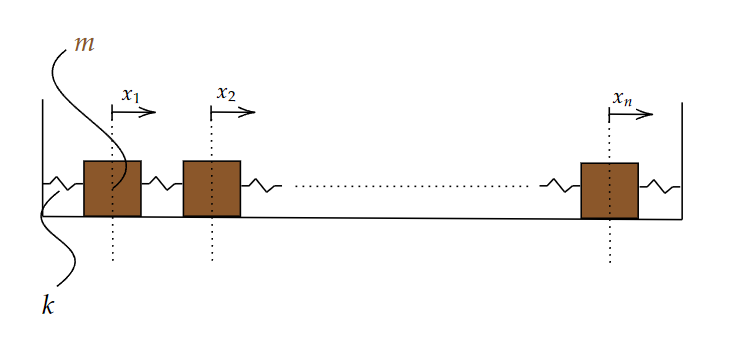Posts - Page 2 of 4
Polaritons
In solid-state physics, polaritons are quasiparticles arising from the strong coupling of photons with optical phonons in a crystal. These coupled modes play a central role in understanding the optical properties of ionic crystals, particularly in the infrared frequency range.
Tight-Binding Approximation
Nearly Free Electron Model and Energy Bands in One Dimension, Tight-Binding Approximation
Small Oscillations
Small Oscillations, Normal Modes of Vibration, Coupled Oscillators
Poisson Bracket, Poisson Theorems
Learning Objectives:
Plasma Oscillations and Plasmons
Learning Objectives:
Hamilton–Jacobi Equation
Hamilton–Jacobi Equation with Example of Harmonic Oscillator
Generating Function
Learning Objectives:
Legendre Transformation
Learning Objectives:
Hamilton Equation of Motion
Hamilton’s Equations of Motion
Hamilton’s Principle
Hamilton’s Principle
Least Action Principle
The Principle of Least Action
Calculus of variation
Calculus of variation
Lagrange’s Equation
D’Alembert’s Principle, Lagrange’s Equation and Its Simple Applications
Dielectric Properties of Materials
Macroscopic Dielectric Constant
Numerical Methods
Eigenvalues and eigenvectors play a central role in linear algebra, with wide applications in physics, engineering, and data science. They help understand the action of a linear transformation in a given vector space.
Image Processing: Eigenvalues and Eigenvectors
🧠 Objective
This lecture explores the application of eigenvalues and eigenvectors in image processing using Principal Component Analysis (PCA). We will:
Dissertation: N-Interconnected Mass-Spring System
Dissertation-Heat Equation
Simulation of the Heat Equation in a Rectangular Room
Dissertation-Wave Equation
Simulation of the Wave Equation in a Circular Domain Using Python
Python: Course Contents
🚀 Hands-on Practice: Practice coding by clicking on button below:

